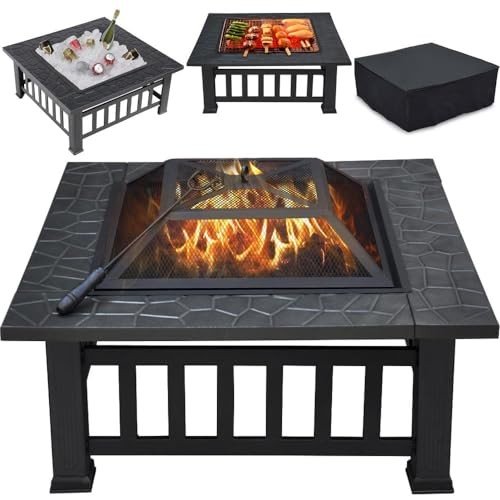The Fireplace: A Warm Embrace of Tradition and Comfort
Fireplaces have actually been an essential part of human habitation for centuries, working as a source of heat, a meeting place, and a symbol of comfort. While the modern versions may vary extremely from their ancient ancestors, the allure of a fireplace withstands. This post explores the various elements of fireplaces, including their history, function, types, and upkeep, while also attending to often asked concerns.
The Evolution of Fireplaces
Fireplaces date back to prehistoric times when open flames were utilized for cooking, heating, and protection from wildlife. Over the centuries, fireplaces progressed from simple fire pits to the advanced performances we see today. Here is a brief timeline of their evolution:
- Prehistoric Era: Cavemen utilized open flames for warmth and cooking. Wind and smoke typically blew into residences.
- Middle Ages: Stone and brick fireplaces became common in homes and castles, integrating chimneys to carry smoke outside.
- Renaissance: Elaborately developed mantels emerged, and fireplaces ended up being centers of social interaction.
- Industrial Revolution: Innovations in heating products resulted in a variety of styles and functionalities.
- Modern Era: The advent of natural gas, electric, and bioethanol fireplaces supplied cleaner alternatives to traditional wood-burning systems.
Table 1: The Evolution of Fireplaces
| Period | Qualities |
|---|---|
| Ancient Era | Open flames for heat and cooking |
| Middle Ages | Stone and brick structures with early chimneys |
| Renaissance | Ornate mantels, social centers |
| Industrial Revolution | Diverse styles, introduction of new products |
| Modern Era | Gas, electric, and bioethanol alternatives |
The Purpose of a Fireplace
Fireplaces serve dual functions: they provide physical warmth and develop a psychological environment. House owners often gather around the fireplace to bond, share stories, and take pleasure in a cozy setting. The radiance of a fire can be relaxing, adding to a sense of relaxation and intimacy. Beyond individual satisfaction, fireplaces likewise provide practical advantages, including:
- Home Heating: Effective heat source, specifically in cooler environments.
- Increased Home Value: A properly designed fireplace can improve the aesthetic worth of a home.
- Emergency Heating: In case of power blackouts, wood-burning fireplaces can act as a crucial heat source.
- Aesthetic Appeal: A focal point that adds to interior decoration.
Types of Fireplaces
Today, fireplaces can be found in numerous styles and fuel types, accommodating a diverse variety of preferences and settings. Here are some common types:
Wood-Burning Fireplaces:
- Traditional fire pits
- Traditional masonry fireplaces
- Need significant maintenance and chimney upkeep
Gas Fireplaces:
- Available in both direct vent and ventless ranges
- Easier to use and maintain than wood-burning fireplaces
- Supply instant heat with a flick of a switch
Electric Fireplaces:
- Offer associated heat sources without genuine flames
- Often developed to simulate traditional fireplaces
- Ideal for smaller areas and homes without a chimney
Bioethanol Fireplaces:
- Use bioethanol fuel, providing a sustainable alternative
- Need no ventilation and can be placed anywhere
- Safe and easy to preserve
Table 2: Types of Fireplaces
| Type | Fuel Source | Features | Upkeep Requirements |
|---|---|---|---|
| Wood-Burning | Wood | High atmosphere, heat source | Routine chimney cleaning |
| Gas | Natural gas or gas | Instant heat | Minimal, occasional maintenance |
| Electric | Electrical power | Easy setup | Extremely low maintenance |
| Bioethanol | Bioethanol fuel | Ventless, portable | Low, mainly cleaning |
Upkeep and Safety Considerations
Owning a fireplace involves certain obligations, especially regarding its safe operation and long-lasting maintenance. Here are necessary upkeep pointers and safety guidelines:
Maintenance Tips:
- Annual Inspection: Always have your chimney and fireplace checked at least as soon as a year by a certified specialist.
- Routine Cleaning: Clean out ashes and particles after each use, and guarantee the flue is open before starting a fire.
- Inspect for Cracks: Inspect masonry for fractures or damage to avoid structural concerns.
- Use Proper Fuel: Only usage dry, skilled wood for wood-burning fireplaces; do not burn cured wood.
Safety Guidelines:
- Install Smoke Detectors: Ensure smoke detectors are practical, checking them monthly and replacing batteries as required.
- Keep a Fire Extinguisher: Have one nearby, even if a fireplace is utilized rarely.
- Supervise Flames: Never leave a fire ignored, and guarantee kids and family pets are monitored around the fireplace.
Often Asked Questions (FAQs)
1. How can I decrease smoke from a wood-burning fireplace?
To minimize smoke, use dry, skilled wood, and guarantee that your chimney is tidy and unobstructed.
2. Is it safe to utilize gas fireplaces during a gas leakage?
Never use a gas fireplace throughout a gas leak. Best Fireplace UK evacuate the location and contact gas services for aid.
3. Can I set up an electric fireplace myself?
Electric fireplaces are usually simple to set up, however it is suggested to talk to professionals to guarantee safety and compliance with regional building codes.
4. What is the best type of fireplace for small areas?
Electric fireplaces or bioethanol models are frequently best for small spaces, as they do not need substantial ventilation or structural adjustments.
Fireplaces have transcended their initial purpose of offering heat to become cherished components of home style and domesticity. They stimulate memories of heat, celebrations, and togetherness while providing functional benefits that improve modern living. By understanding the numerous types of fireplaces, their upkeep, and safety practices, property owners can enjoy the classic appeal of this beloved function for generations to come.

